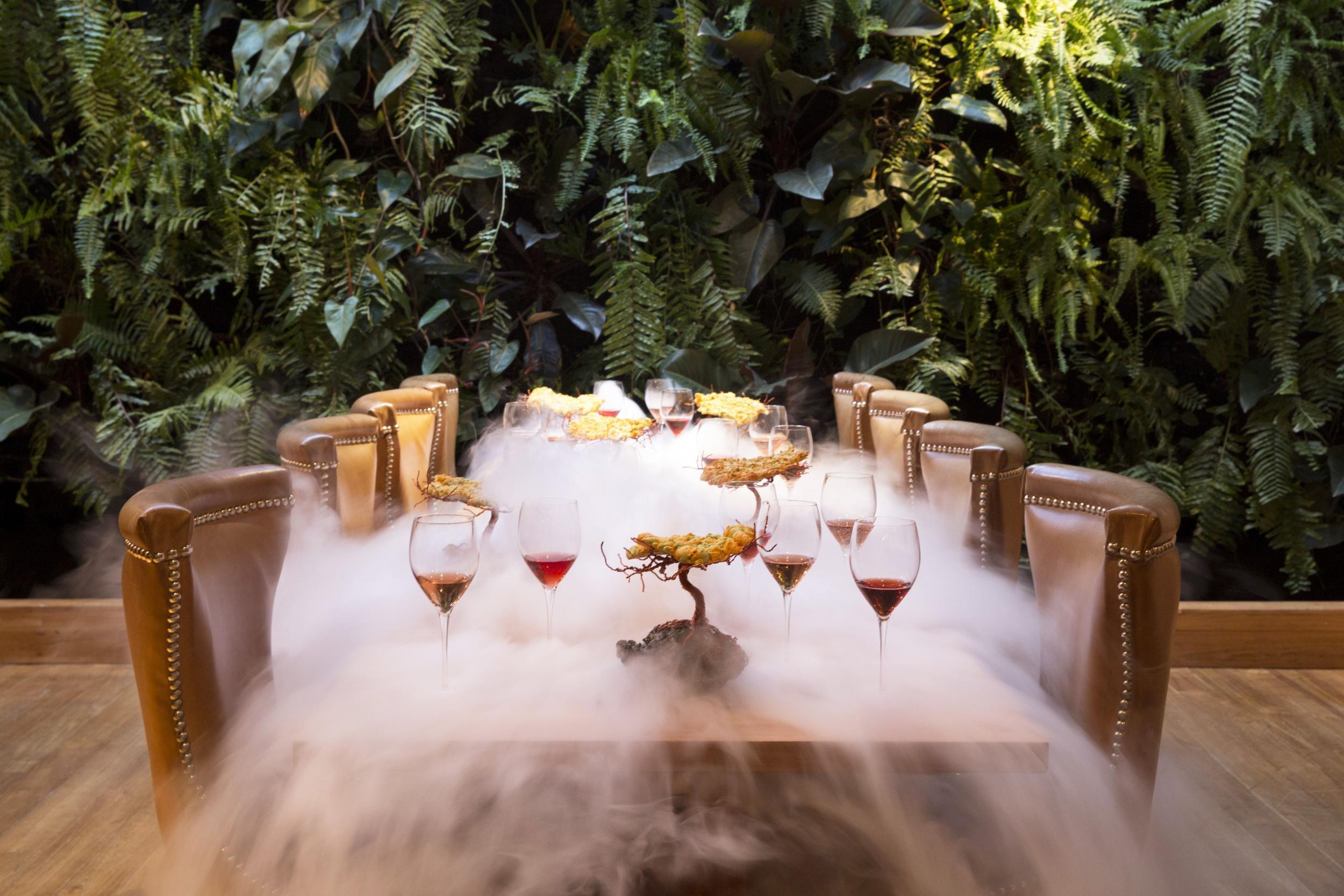The Independent's journalism is supported by our readers. When you purchase through links on our site, we may earn commission.
Bogota: Why Colombia's capital is the best place for a foodie to visit
The Colombian capital is making waves with its food scene, says Sorrel Moseley-Williams

When was the last time you sampled half the ingredients on a menu for the first time? Your palate will go into overdrive at Bogota’s Leo, where chef Leonor Espinosa brings Colombia’s ecosystems and abundant larder to life. Edible debuts might include Amazonian rainforest-sourced cacay nut and babilla (spectacled caiman), forest-dwelling hormigas culonas (leafcutter ants) or pepino melon plucked from Andean woods. The best part? Espinosa’s incredible 12-step tasting menu is a snip at 180,000 Colombian pesos – or £46.
One of the world’s most biodiverse countries, underrated Colombia has earned its seat at the table – and the people behind Latin America’s Best Restaurants awards agree. Bogota has been chosen to host the fifth edition, which takes place tonight. It’s a sure sign that foodies should take note of this South American country that began its peace process last November following 53 years of civil war.
Espinosa, who picked up the prestigious Basque Culinary World Prize 2017 in July for her work reviving the ancestral knowledge of indigenous and Afro-Colombian peoples, isn’t the only fine-dining Bogota chef to focus on Colombian ingredients. At Criterión, MasterChef Colombia co-presenter Jorge Rausch – who cut his teeth at Oxford’s Le Manoir aux Quat’Saisons – and pastry chef brother Mark apply French culinary techniques to two tasting menus: the lengthier 10-step number kicks off with a fluffy yam, coastal fresh cheese, roasted aubergine and hogao (creole sauce) cappuccino served in a coffee cup.
Bogotá's burgeoning food scene
Show all 10Bogota’s entrance on the scene has been a long time coming. “We’ve been behind the rest of the world because of the violence,” admits Jorge Rausch. “But Colombia now needs to show we’ve got more than just tasty food – extraordinary stories from producers are coming to light because of the peace process.”
Other Bogota musts include hipster eatery and bar El Chato where chef Alvaro Clavijo deals in well-dressed Colombian comfort food such as lamb, quinoa and chickpeas, while Juan Manuel Barrientos’s sensorial experience at El Cielo awakens taste as well as touch and smell. What’s more, his foundation trains both former FARC guerrillas and demobilised army soldiers in the kitchen – then hires them to work together.
Harry Sasson’s eponymous restaurant and Andrés Carne de Res – which has no fewer than two dance floors in its outré restaurant – are also key on the food scene.
While some of these establishments are found in Zona G (the “Gastronomic Zone”), the area of Chapinero Alto is also making waves. Chef Paula Silva opened soul-food restaurant Hippie here in 2015. “This is the new foodie neighbourhood,” she says. “Lots of small spots have sprung up, converting old houses into cafés, organic specialists and sushi joints because rents are cheaper here. There’s plenty of diversity.”
Chapinero Alto also houses Plaza de Mercado de Paloquemao, one of Bogotá’s 44 food markets. Aside from the family run fruit and veg stalls, the markets are also the ideal spot to to try local dishes designed to combat the mountainous city’s cool climes, says Jorge Rausch – who recommends jugo de borojó, a freshly blended crab cocktail (an aphrodisiac, he says) at Plaza Siete de Agosto market, followed by ajiaco (chicken and potato soup), sancocho de costilla (beef rib stew) and pata (beef or pork trotter soup) from the stalls upstairs.
And then there’s street food. Bogotanos love to snack on maize arepas filled with egg, cheese and ham, fresh fruit like mango biche (salted green mango) and smoothies. “Carts are everywhere as we get cravings before work, mid-morning and in the afternoon,” says Paula Silva. Most items cost around 2,500 pesos – just 64p.
And though fine dining in Bogota is already attainable on a UK budget, top chefs are now focusing on casual dining experiences. The Rausches’ latest offering, Local, uses only Colombian ingredients, while at Misia, Leonor Espinosa uses her grandmother’s recipes to recreate fritanga (fried street food) such as caramanola beef pasties and mole de queso (yam and cheese).
“Conflict isolated us from the world, and our products were also isolated. But we’re rediscovering our cuisine – and Bogota is at the centre of this,” says Silva. It’s time to pull up a seat at the Colombian dining table.
Travel essentials
Getting there
Avianca flies to Bogota direct from Heathrow from £750.
Staying there
The BOG hotel has doubles from $125 (£95), B&B.
Subscribe to Independent Premium to bookmark this article
Want to bookmark your favourite articles and stories to read or reference later? Start your Independent Premium subscription today.

Join our commenting forum
Join thought-provoking conversations, follow other Independent readers and see their replies